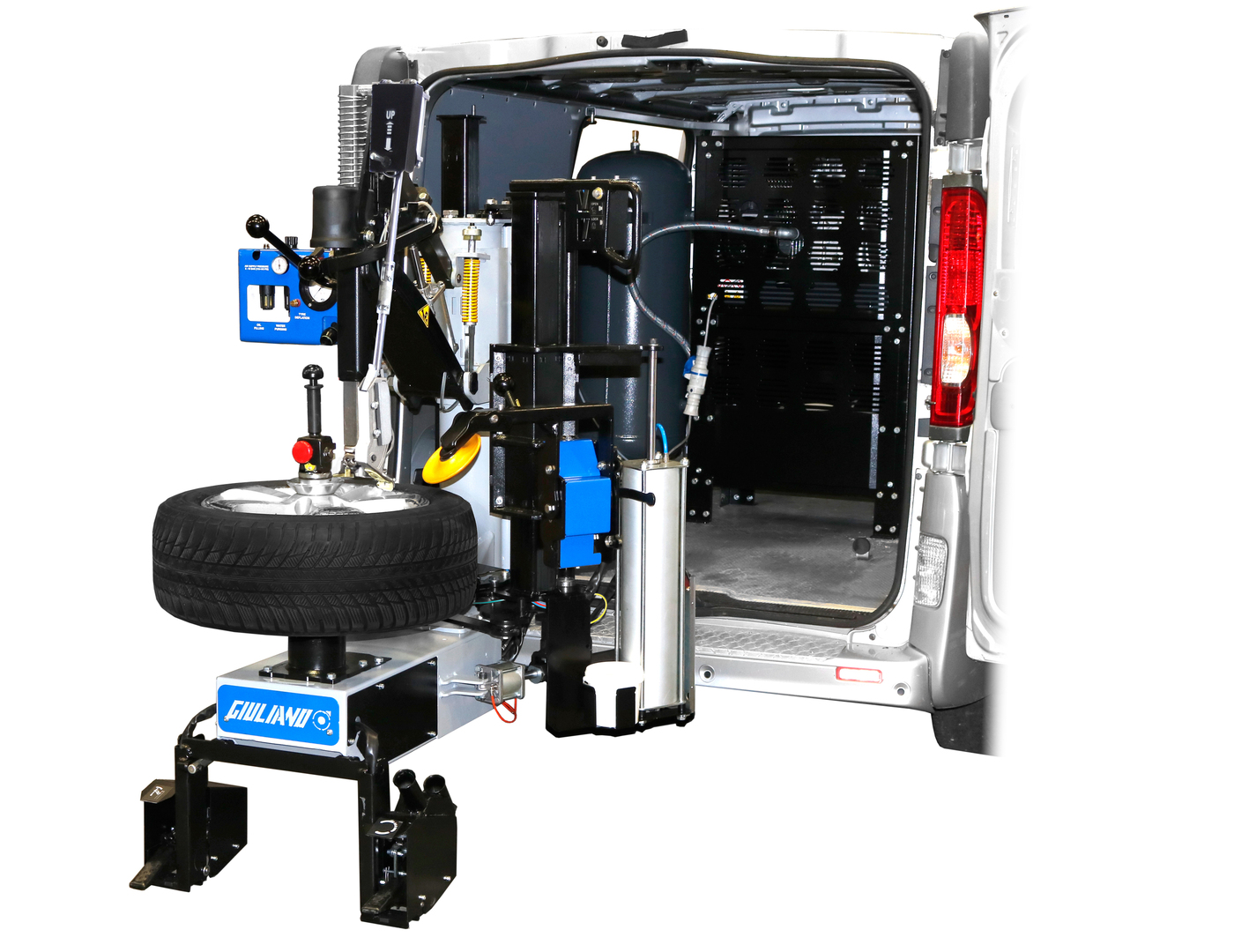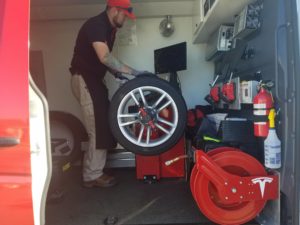Emergency Situation Mobile Tire Service Available in Las Vegas
Wiki Article
Tire Service: Proven Techniques for Ideal Tire Maintenance and Treatment
Maintaining optimal tire condition is paramount for both security and performance of any car. From making sure proper tire stress to regular turning and placement, there are tested approaches that can considerably expand the lifespan of your tires and boost overall driving experience. As we check out the details of tire care and upkeep, we will discover essential standards that every lorry owner must stick to for the very best feasible outcomes. Allow's delve into the globe of tire solution and discover the tricks to maintaining your tires in first-class shape for the long run.Significance of Tire Stress
Ample tire pressure promotes far better fuel effectiveness, as under-inflated tires can lead to increased rolling resistance, triggering the engine to function harder and take in even more gas. Appropriate tire stress ensures even step wear, boosting tire long life and saving cash in the long run by postponing the demand for premature substitutes. On a regular basis checking and adjusting tire stress, especially previously long trips, is an easy yet effective method to enhance vehicle efficiency, prolong tire life expectancy, and prioritize safety on the road.Tire Turning Standards
When considering tire turning guidelines, it is important to understand the value of this upkeep task in maximizing tire lifespan and maintaining ideal vehicle efficiency. Tire turning includes altering the setting of each tire on a car to make sure even walk wear. Front tires tend to wear quicker than rear tires as a result of guiding pressures, making routine turning vital for well balanced wear patterns. The suggested rotation pattern varies relying on whether a lorry is front-wheel, rear-wheel, all-wheel, or 4x4. Normally, tires must be turned every 5,000 to 7,500 miles, or as recommended in the car manual. Disregarding tire turning can cause uneven wear, affecting handling, grip, and possibly compromising car safety. By sticking to appropriate rotation standards, motorists can prolong the life of their tires, improve fuel efficiency, and boost general driving experience. Regular turning is an easy yet efficient maintenance technique that adds considerably to tire longevity and vehicle efficiency.
Advantages of Wheel Alignment
Making sure appropriate wheel positioning after tire rotation is essential for maintaining balanced wear patterns and maximizing vehicle efficiency. In addition, proper wheel positioning helps to extend the life expectancy of your tires. Misaligned wheels can trigger irregular tire wear, leading to premature tire substitute and raised upkeep expenses.

Tire Tread Depth Inspect
Performing a regular assessment of tire step deepness is important for preserving secure driving problems and prolonging the life expectancy of your tires. The walk on your tires plays an important duty in giving traction, especially in wet or slippery problems. To examine your tire tread depth, you can utilize a tread deepness scale or the dime test. The recommended tread depth is at least 2/32 of an inch. If the walk depth is below this threshold, it is time to replace your tires to guarantee optimum efficiency and security when driving. Uneven step wear can indicate issues with tire suspension, positioning, or stress, highlighting the relevance of normal tread depth checks. Ignoring to keep an eye on and maintain correct step depth can result in reduced try this website grasp, longer braking ranges, and an enhanced risk of hydroplaning. By including tire tread deepness explore your routine upkeep routine, you can drive with self-confidence knowing that your tires are in top problem.
Seasonal Tire Inspection
Seasonal tire examination is an essential aspect of tire maintenance that makes certain tires are all set to encounter the difficulties positioned by different weather conditions. In prep work for wintertime, it is vital to check the tire stress regularly as chilly temperature levels can cause tire pressure to drop. By conducting routine seasonal tire assessments, drivers can lengthen tire life-span, enhance fuel performance, and most importantly, make sure a secure driving experience in differing weather condition problems.Verdict
Finally, preserving proper tire stress, turning tires frequently, aligning wheels appropriately, checking walk deepness, and carrying out seasonal inspections are crucial methods for optimal tire treatment. By following these verified methods, motorists can ensure their tires last much longer, perform much better, and add to general lorry security. It is necessary to focus on tire upkeep to avoid crashes, enhance gas efficiency, and extend the life-span of tires.Sufficient tire stress advertises better fuel performance, as under-inflated tires can lead to increased rolling resistance, triggering the engine to function harder and take in even more gas.When considering tire rotation standards, it is essential to understand the value of this upkeep job Learn More Here in optimizing tire life-span and maintaining ideal automobile efficiency. Seasonal tire inspection is an essential element of tire upkeep that see this site makes certain tires are all set to face the challenges positioned by different weather condition problems. By performing regular seasonal tire inspections, drivers can prolong tire life expectancy, boost fuel efficiency, and most significantly, guarantee a secure driving experience in differing climate conditions.
In final thought, keeping proper tire pressure, turning tires regularly, lining up wheels appropriately, keeping an eye on step depth, and conducting seasonal assessments are necessary practices for optimum tire treatment.
Report this wiki page